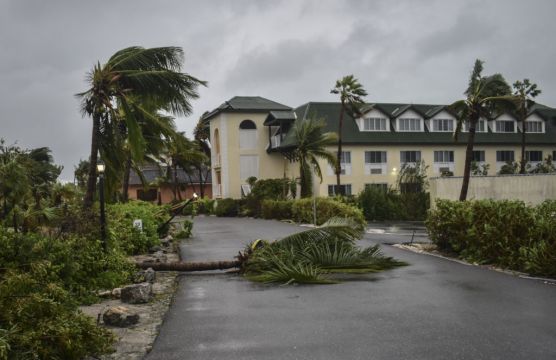Hurricane Fiona strengthened into a Category 4 storm on Wednesday after devastating Puerto Rico, then lashing the Dominican Republic and the Turks and Caicos Islands.
The storm, which is forecast to squeeze past Bermuda later this week, has been blamed for directly causing at least four deaths in its march through the Caribbean, where winds and torrential rain in Puerto Rico left a majority of people on the US territory without power or running water.
Hundreds of thousands of people scraped mud out of their homes following what authorities described as “historic” flooding.

Power company officials initially said it would take a few days for electricity to be fully restored, but then appeared to backtrack late on Tuesday night. Only 26% had power as of Wednesday morning, three days after the hurricane hit the island.
“Hurricane Fiona has severely impacted electrical infrastructure and generation facilities throughout the island. We want to make it very clear that efforts to restore and re-energise continue and are being affected by severe flooding, impassable roads, downed trees, deteriorating equipment and downed lines,” Luma, the company that operates power transmission and distribution, said.
The hum of generators could be heard across the territory as people became increasingly exasperated.
Some were still trying to recover from Hurricane Maria, which made landfall as a Category 4 storm five years ago, causing the deaths of an estimated 2,975 people.

Long lines were reported at several petrol stations across Puerto Rico, and some pulled off a main road to collect water from a stream.
Parts of the island had received more than 25 inches (64cm) of rain and more had fallen on Tuesday.
By late Tuesday, authorities said they had restored power to some 380,000 of the island’s 1.47 million customers.
Piped water service was initially knocked out for most of the island’s users due to lack of power and turbid water at filtration plants, but 55% had service on Wednesday morning.

The National Weather Service in San Juan issued a heat advisory for several cities because a majority of people on the island of 3.2 million remained without power.
The head of the Federal Emergency Management Agency travelled to Puerto Rico on Tuesday as the agency announced it was sending hundreds of additional personnel to boost local response efforts.
Meanwhile, the US department of health and human services declared a public health emergency on the island and deployed a couple of teams there.
In the Turks and Caicos Islands, officials reported minimal damage and no deaths despite the storm’s eye passing close to Grand Turk, the small British territory’s capital island, on Tuesday morning.

Th government had imposed a curfew and urged people to flee flood-prone areas.
The US National Hurricane Centre said Fiona had maximum sustained winds of 130mph (215kph) on Wednesday morning and was centred about 700 miles (1,125km) southwest of Bermuda, heading north at 8mph (13kph).
It was likely to approach Bermuda late on Thursday or Friday and then Canada’s Atlantic provinces on Saturday.
The storm had killed a man in the French overseas department of Guadeloupe, another man in Puerto Rico who was swept away by a swollen river and two people in the Dominican Republic: one killed by a falling tree and the other by a falling electric post.







